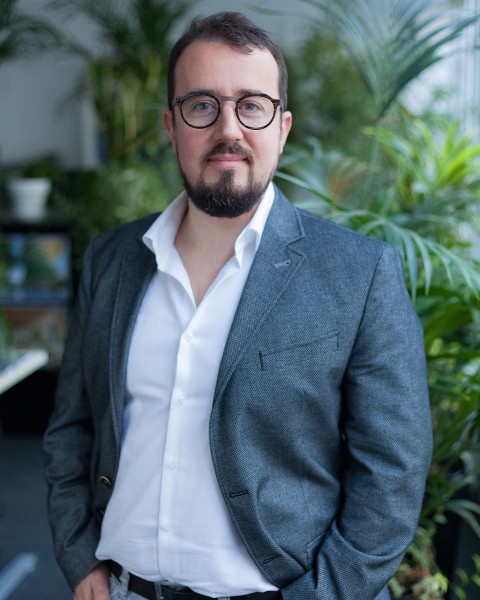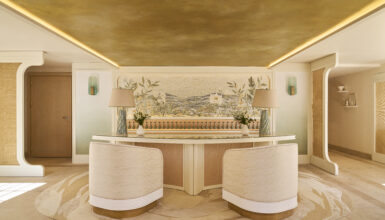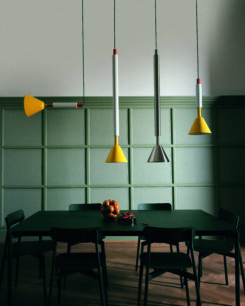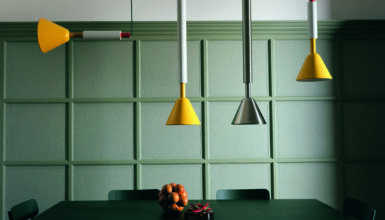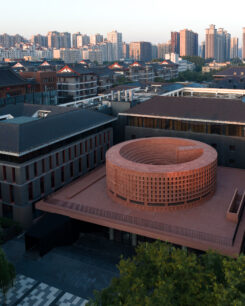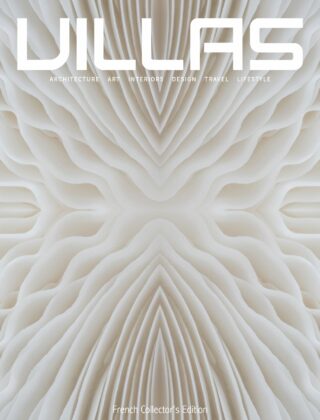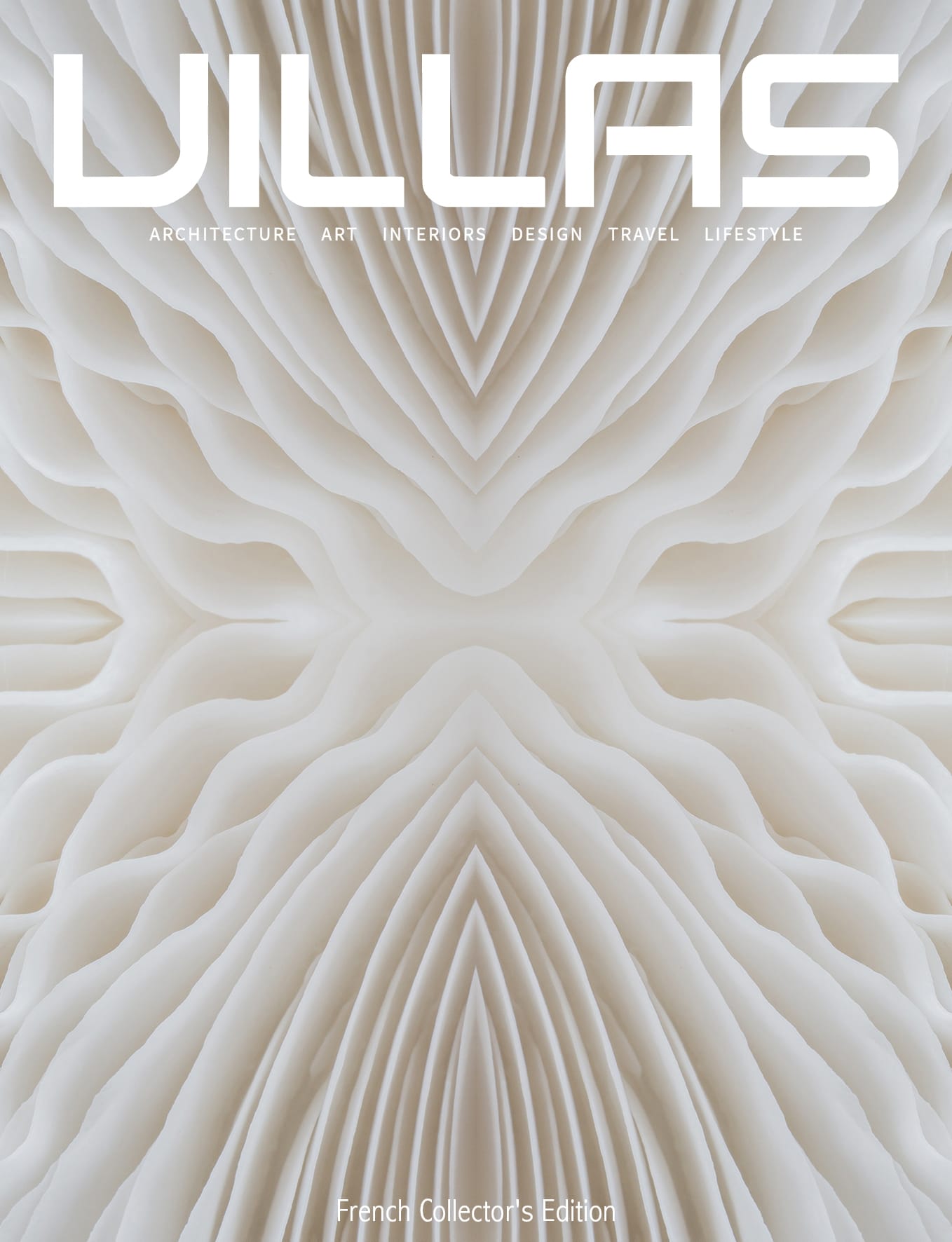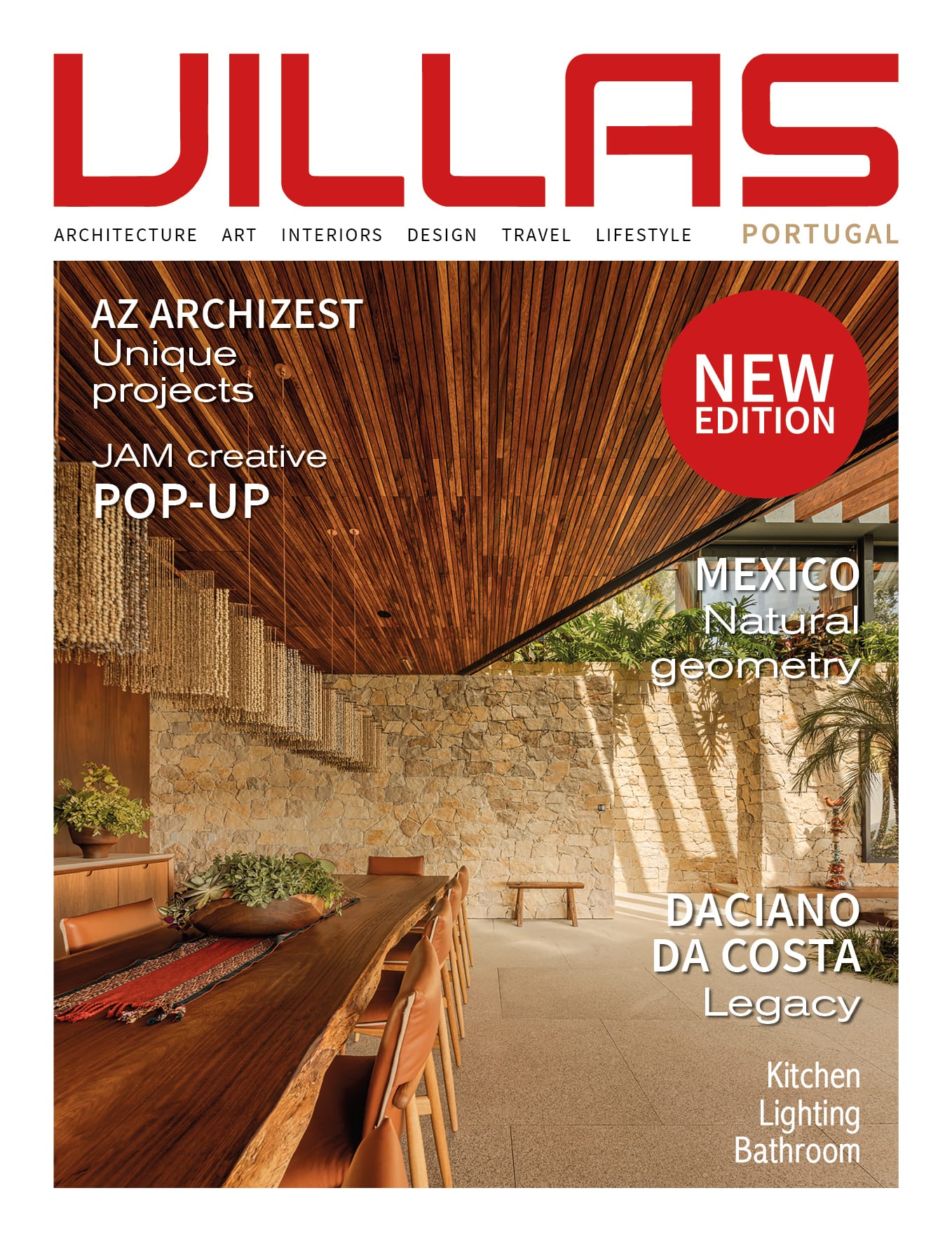How did you start as an architect?
Born in La Louvière, I founded my agency in 2010 in Paris, France, following my studies at the Université Libre de Bruxelles (ULB) and after internships with leading figures in the world of architecture; the Italian Massimiliano Fuksas and the French Odile Decq and Claude Vasconi. Architects who fascinated me. I learned the art of design, a taste for engineering and technical mastery of the building site.
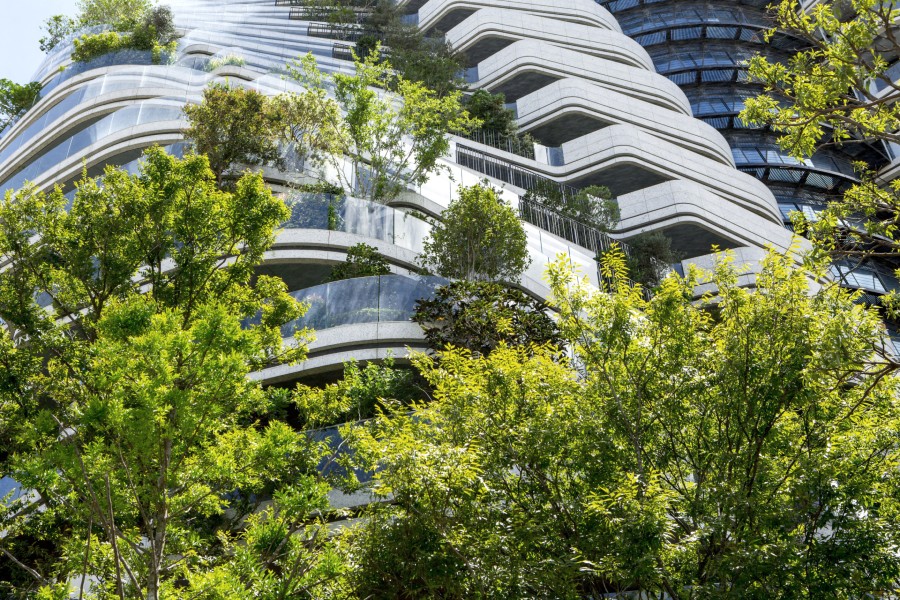
Vincent Callebaut Architectures | Tao Zhu Yin Yuan, Taipei
What do you consider your most important achievement to date?
The year I opened my architectural practice Vincent Callebaut Architectures, I was fortunate enough to win an international competition for the construction of the Tao Zhu Yin Yuan project, an almost 50,000 square metre “carbo-absorbing” residential tower in Taipei, the capital of Taiwan. This was completed in 2018. A second project of which I am proud is the Belgian Pavilion for the World Expo 2020 in Dubai, designed in co-creation with the Belgian architectural firm Assar and the builder Besix.
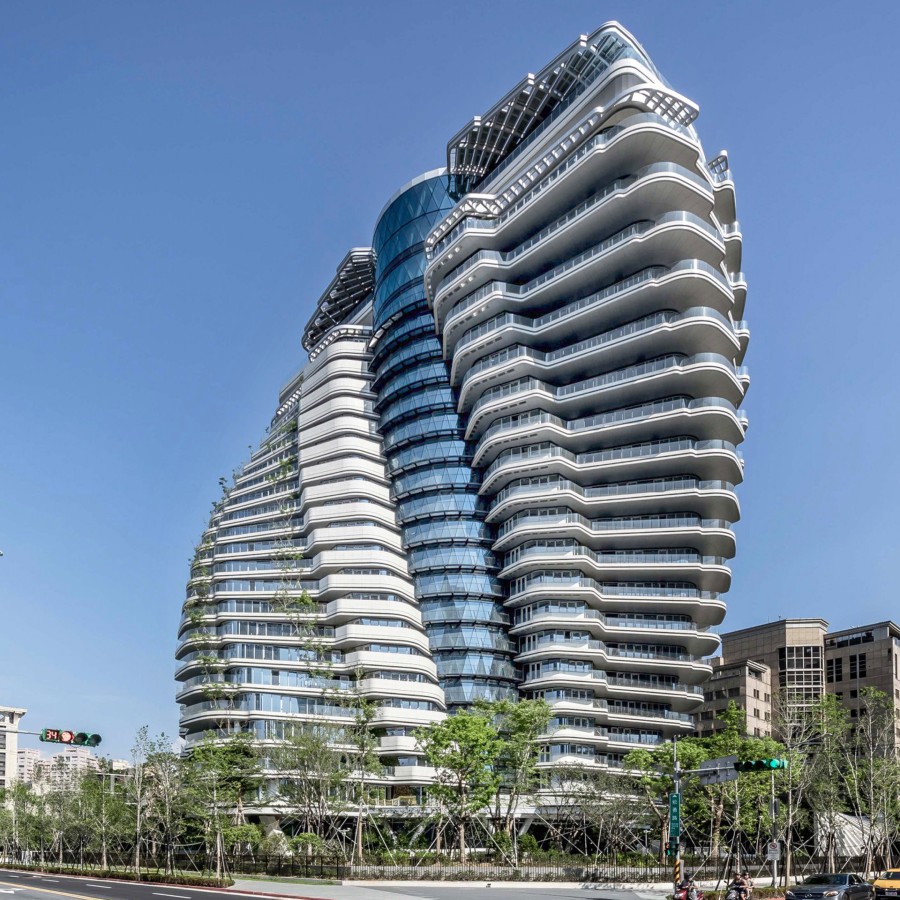
Vincent Callebaut Architectures | Tao Zhu Yin Yuan, Taipei
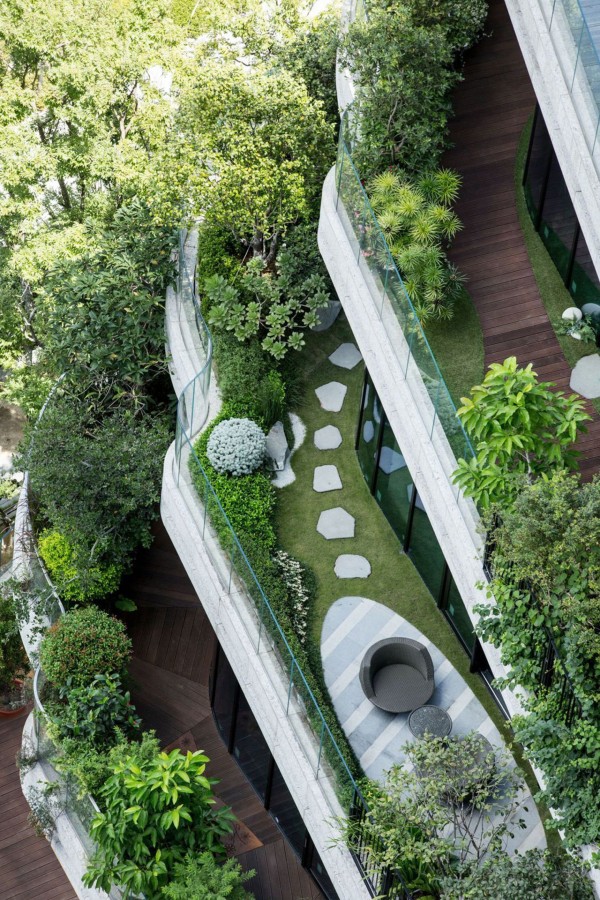
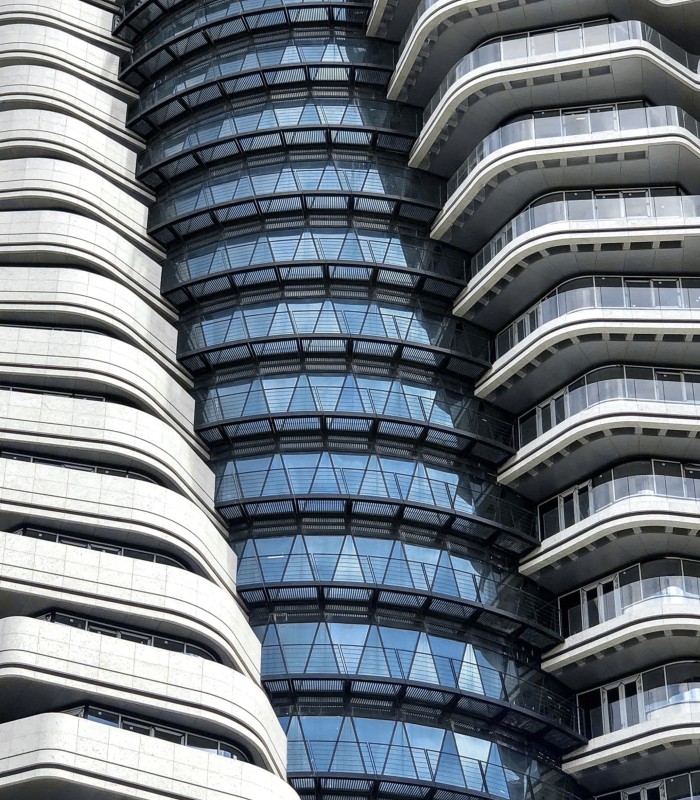
Vincent Callebaut Architectures | Tao Zhu Yin Yuan, Taipei
Tell us about the adventure of the Belgian Pavilion in a few words.
As soon as the official theme of the 2020 World Expo – “Connecting Minds, Building the Future” – was announced, I knew that Renaud Chevallier, CEO of Assar Architects, was participating in the competition for the Belgian Pavilion. I therefore suggested that we join forces. It was a great human adventure with the Besix group, which is the builder of the famous Burj Khalifa in Dubai (the highest skyscraper in the world). Together, we wanted to break out of the archetypes and transcend values. Belgium is a small country. But this capital of Europe is esteemed both by Latin countries for its diversity and quality in the arts and by Anglo-Saxon and Germanic countries for its ingenuity, even its pragmatism. The Green Arch of the Belgian Pavilion therefore symbolises these values of creativity and innovation. The building’s green envelope is a mini oasis of 2,500 plants and shrubs growing on the facade, sides and roof, to take advantage of the phenomenon of evapotranspiration: the transfer of moisture from the earth to the atmosphere through the evaporation of water and the transpiration of plants. The Belgian Pavilion is a spectacular and ecological building, built with a budget of ten million euros.
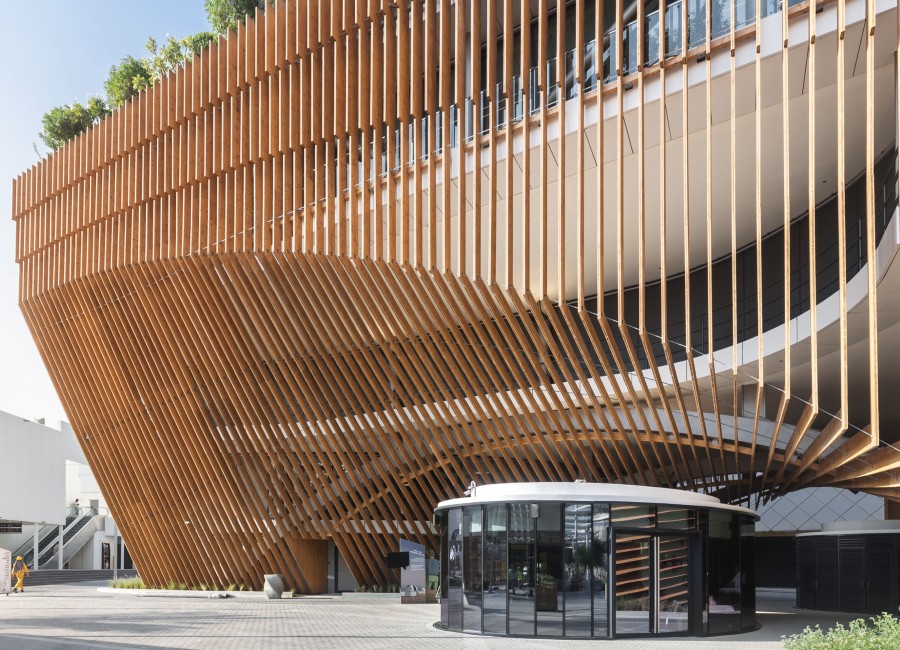
Vincent Callebaut Architectures | The Green Arch, Belgian Pavilion, 2020 World Expo, Dubai
How have you financed your building projects so far?
International competitions allow me to be in contact with many decision-makers – municipalities, urban planners, developers and builders – and sponsors with high means allow me to experiment. The luxury real estate sector offers the opportunity to subsidise innovation, to be able to patent a construction that requires new techniques, and then to democratise them. Being able to work for visionary clients who give themselves the means to achieve their ambitions allows me to contribute to the evolution of the world on my own scale.
Is “green” generational?
Certainly, and especially internationally. Our generation is now benefiting from the advent of renewable energies, but there is still much to be done in Europe. In countries considered to be emerging, in South East Asia and South America, where many economic and social inequalities remain, solidarity takes precedence for new projects of this magnitude and integrating local citizens and entrepreneurs in the building design process becomes a respected thing. In this way, they have already done almost everything that we in the West dreamed of 20 years ago.
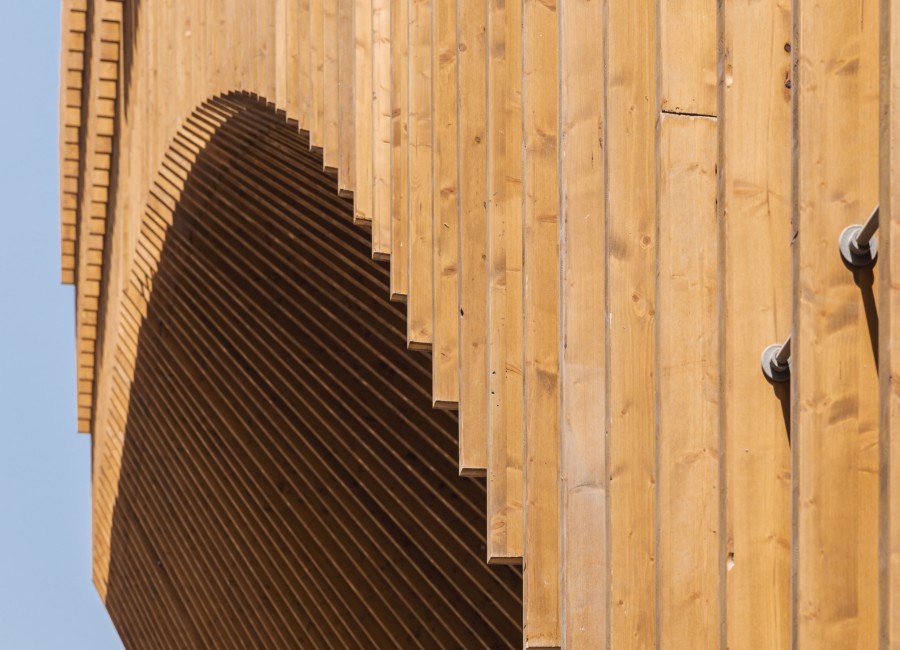
Vincent Callebaut Architectures | The Green Arch, Belgian Pavilion, 2020 World Expo, Dubai
Are you a realistic or utopian architect?
Both. We need, more than ever, utopia: inventing what does not yet exist. Utopia allows us to face reality. Linking up with the world of art, agronomy, learning from both plant and animal biodiversity, working in a transdisciplinary way with scientists close to home and internationally to invent new ways of living cannot be achieved through a traditional approach to construction. The raison d’être of architecture is to be in touch with the times and to see further ahead. The fusion of nature and architecture is not a dream, it is possible and developers have understood this. In France, many have contacted me to invite me to these international competitions, to carry out feasibility studies of projects in the field. This is why I decided to open my architectural office there.
What is one of the most notable developments in the architectural profession that you have observed in recent years?
The era of the so-called “starchitects” now appears to be over and the collective vision is at the forefront. Also, the economic crisis linked to the current pandemic shows how vital dreaming is. Community spirit and dreaming go hand in hand. Architects who think and build in a committed way are the real stars of today.
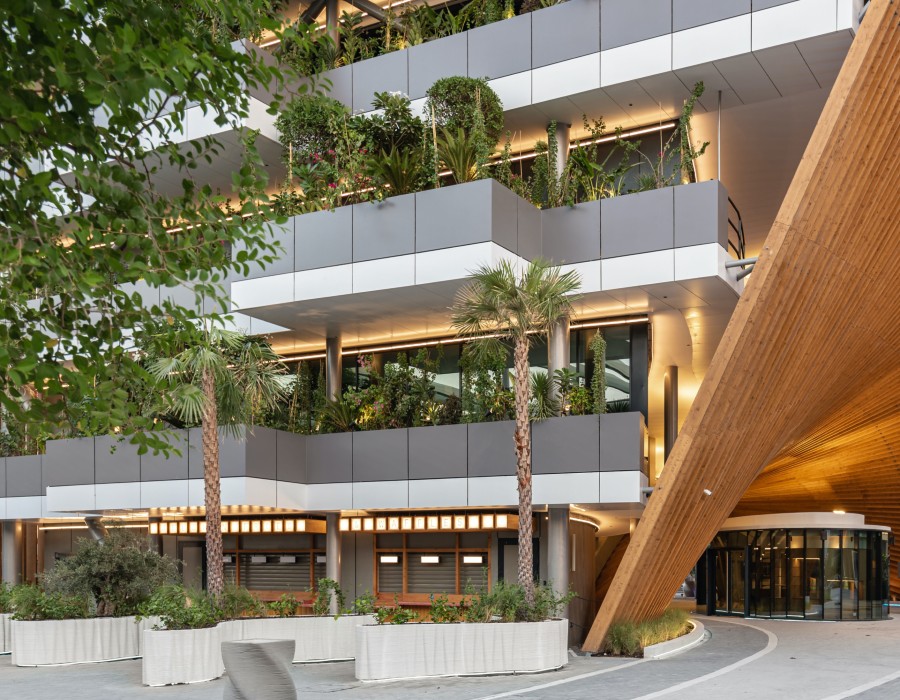
Vincent Callebaut Architectures | The Green Arch, Belgian Pavilion, 2020 World Expo, Dubai
You are known above all for your drawings. Why do you draw so much?
Before working on concrete projects, I deliberately started drawing very prospective projects. At the age of 25, I made a name for myself outside Belgium with drawings: I studied painting a lot during my training and my discovery of the British avant-garde movement Archigram, as well as that of the Pompidou Centre built in Paris in 1977 by Richard Rogers and Renzo Piano, were a turning point for me; an open door to all possibilities.
So what is biomimicry in architecture, which fascinates you so much?
Taking inspiration from nature to try to provide answers to human needs in the face of the ecological transition; imagining architectures and ways of life that are out of the ordinary; thinking literally out of the box, outside of the shapes of cubes and rectangles that abound in architecture and that impoverish the richness of its vocabulary. The curved forms that I favour in my drawings and creations allow me to think about the construction of buildings that produce all the green energy we need (electrical, calorific, refrigerating) and recycle all their waste into resources or function in self-sufficiency.
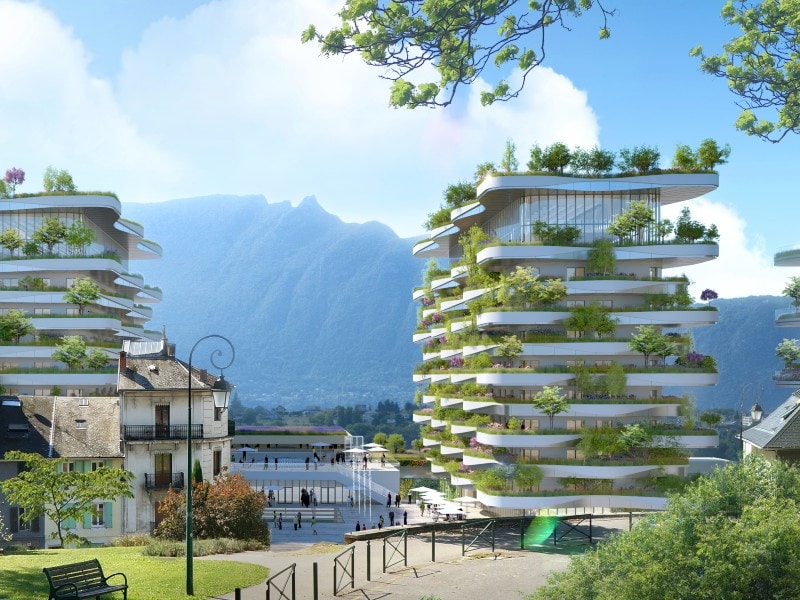
Vincent Callebaut Architectures | The Foam of Waves, Aix-les-Bains
How are these ideas realised in practice and what are the benefits of these environmentally friendly buildings?
To integrate nature into the heart of cities, which are sometimes very dense, my agency and I are thinking about passive constructions where the gardens are no longer next to the buildings but in the heart of them. In Taiwan, we opted for tropical species, and in Dubai, desert species imposed themselves on us. For a building to have a low energy balance, the work on recycling grey water is essential and must be treated on site to give the possibility of watering the vegetation of the building and so that it does not consume energy.
What can we expect from Vincent Callebaut Architectures in the near future?
We are currently working on the metamorphosis of the National French spa in Aix-les-Bains, with Bouygues Immobilier and the Société d’Aménagement de la Savoie. This is a listed historic building dating from 1905, from which we are going to build 220 homes with panoramic views. It will be completed in 2025. A new building of 120 homes in the city of Montpellier, in a new creative district, should also be completed by 2024. In France, we have projects in Lille, Metz and La Rochelle.
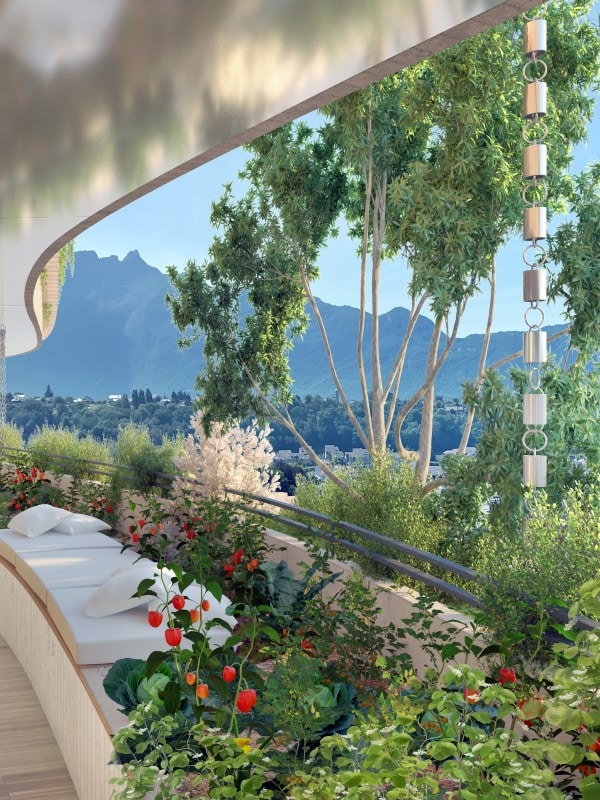
Vincent Callebaut Architectures | The Foam of Waves, Aix-les-Bains
Abroad, The Rainbow Tree in Cebu, Philippines, has been under development for two years and is scheduled for delivery in 2026. Only the vertical circulation core of this building is made of concrete, for seismic reasons. All planks, beams and slabs as well as the façade and insulation elements are made entirely of solid wood.
